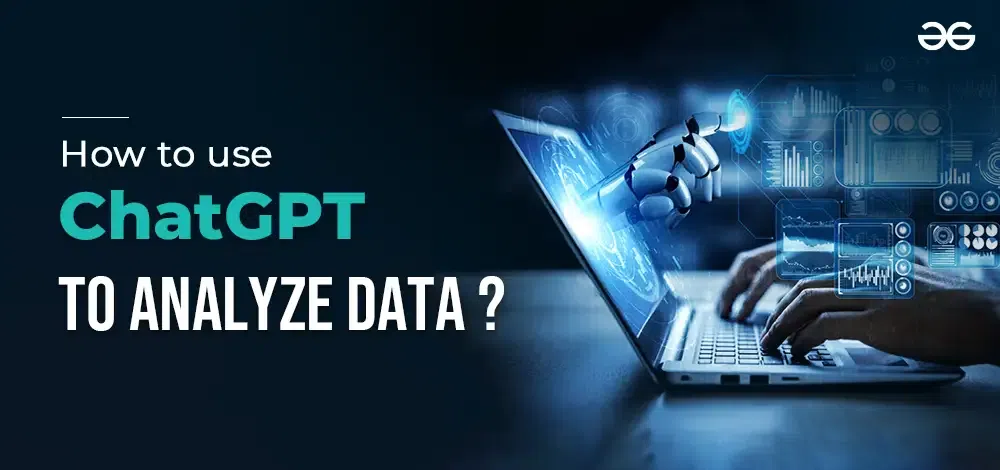In an age where everything is online, increased data in all formats is almost obvious. This data forms the basis of most of the marketing strategies and further product design and assembly. It is almost impossible to work without data today. Right from social media to online shopping, everything is data-driven, and this data drive the business ahead. Hence, data analysis is a crucial task that needs to be performed at every stage.
It is popular to use AI and NLP processes to analyze data more easily and with such large amounts of data it is also impossible to manually perform the analysis. This complete process can be easily automated using ChatGPT, the AI master and that is what this article is all about!
What is Data Analysis?
Data Analysis basically means analyzing the data including all the steps like cleaning the raw data, pre-processing the data to an appropriate format, predicting key factors from the data, and lastly finding conclusions from the data for the necessary tasks ahead.
This process helps most analysts in understanding the trends in the market and taking decisions accordingly. Often, it can be a hard task to evaluate real-world data as the data can be more complex than what a human can handle, and hence, mostly AI and Machine Learning are used for these kinds of tasks.
Steps Involved in Data Analysis
There are multiple steps in Data Analysis right from procuring the right amount of data from reliable sources to the final step of predicting relevant information from the data. Following is a detailed analysis of each of these steps and how they can be made easy with the help of ChatGPT.
A. Defining the Problem
Before diving into data analysis, it’s crucial to clearly define the problem or objective you want to address. Whether you’re looking to identify customer preferences, predict sales, or understand user behavior, defining the problem helps focus your analysis efforts and ensure meaningful outcomes.
To define the problem using ChatGPT, start by providing a clear description of the problem statement. Ask ChatGPT to suggest relevant data sources, identify potential variables, or propose analytical approaches. ChatGPT can assist in brainstorming and narrowing down the problem scope.
Step 1: Start by providing a clear description of the problem statement. Ask ChatGPT for suggestions on relevant data sources.
Step 2: Seek ChatGPT’s help in identifying potential variables to consider in your analysis.
Step 3: Brainstorm with ChatGPT to narrow down the problem scope.
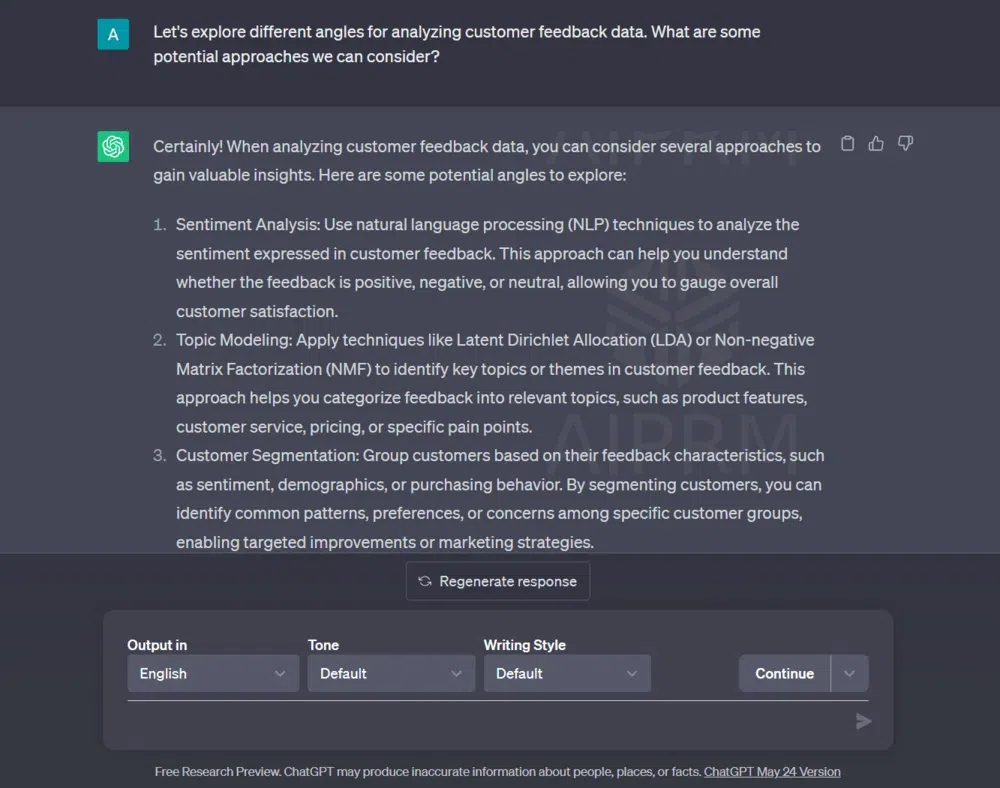
Narrow down the problem
Furthermore, you can find and analyze specific data requirements and constraints with the help of ChatGPT and understand how to approach the data in the best possible way preparing for the further complex steps in the data analysis pipeline.
B. Data Cleaning and Preprocessing
Now that we have collected the relevant dataset, we can start with actual data pre-processing.
Raw data often contains inconsistencies, missing values, duplicates, or other anomalies that can affect the accuracy of the analysis. Data cleaning and preprocessing involve transforming the raw data into a clean and structured format suitable for analysis.
Following are key data processing steps and how ChatGPT can help you in automating them:
Step 1: Handle missing data: Ask ChatGPT for recommendations on handling missing data in your dataset, including imputation techniques or strategies for dealing with missing values.
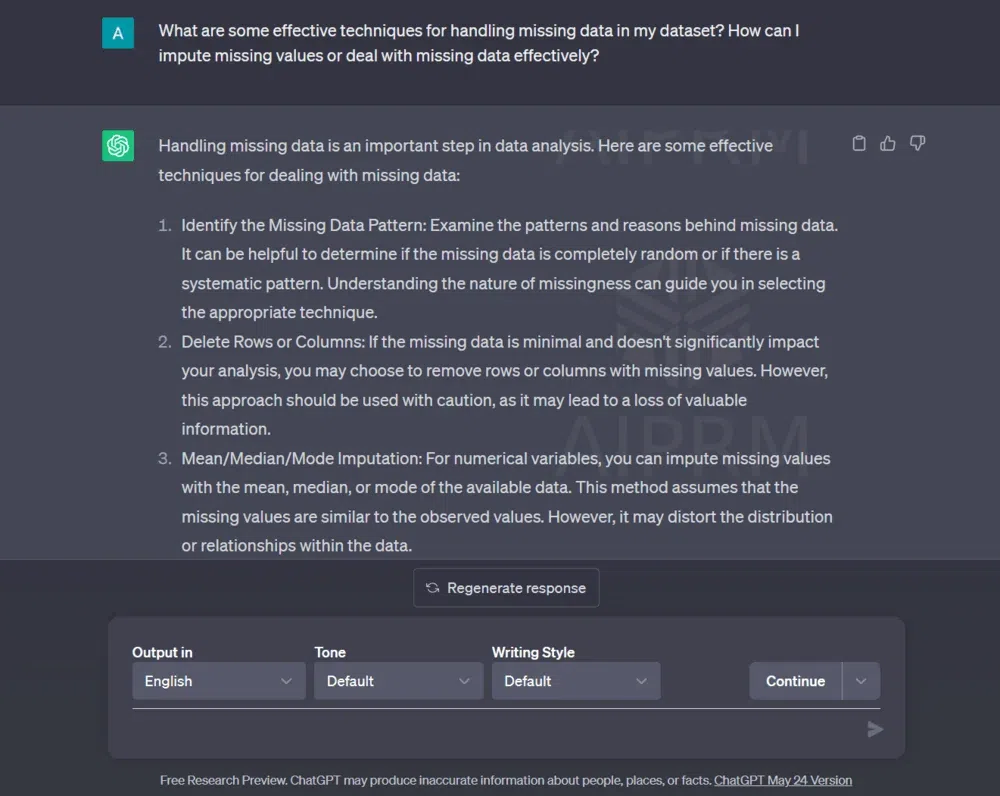
Handle Missing Data
Step 2: Remove outliers: Seek guidance from ChatGPT on outlier detection methods and techniques for removing outliers from your dataset.
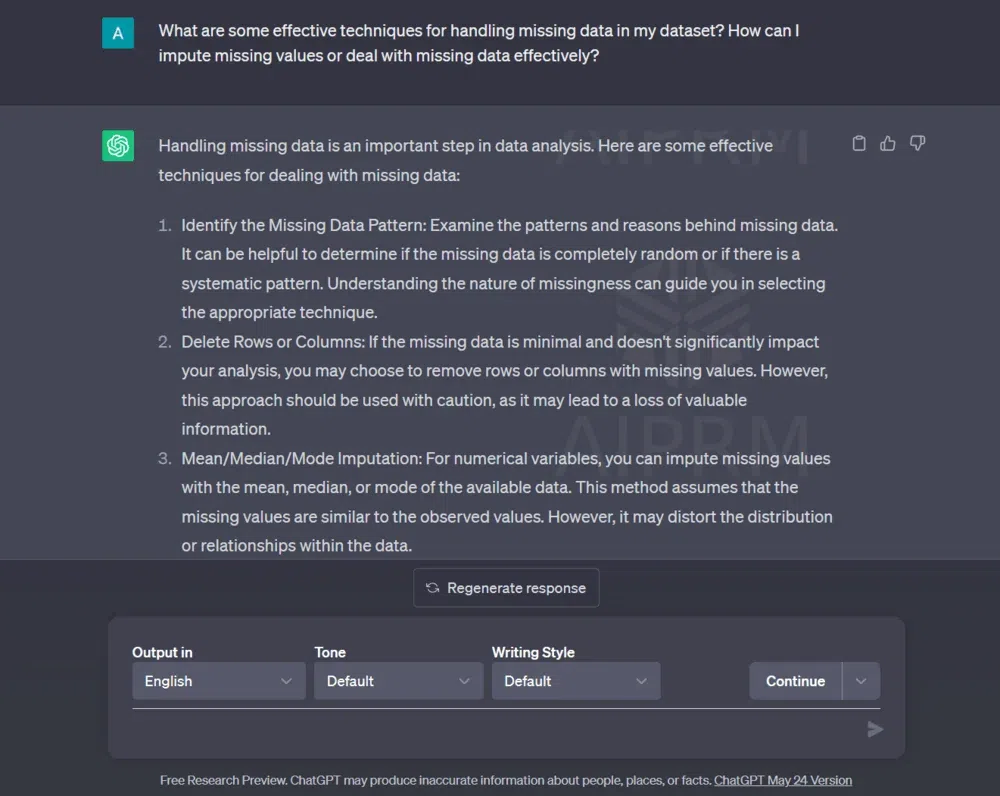
Remove outliers
Step 3: Standardizing the variables: Often than not values in a dataset can be spread over a very large range. Hence, it becomes difficult to analyze such data, and therefore, standardization comes into the picture. Although it is a very simple process, still ChatGPT can help in completing this step as follows:

Standardizing the variables
Step 4: Encoding Categorical Variables: There are a few categorical variables in each dataset and as we are well versed a Machine Learning model needs the labels in numerical format. This step helps in making the data ML-ready. Also when there is a need to perform data visualization, encoded data is easier to analyze and understand.
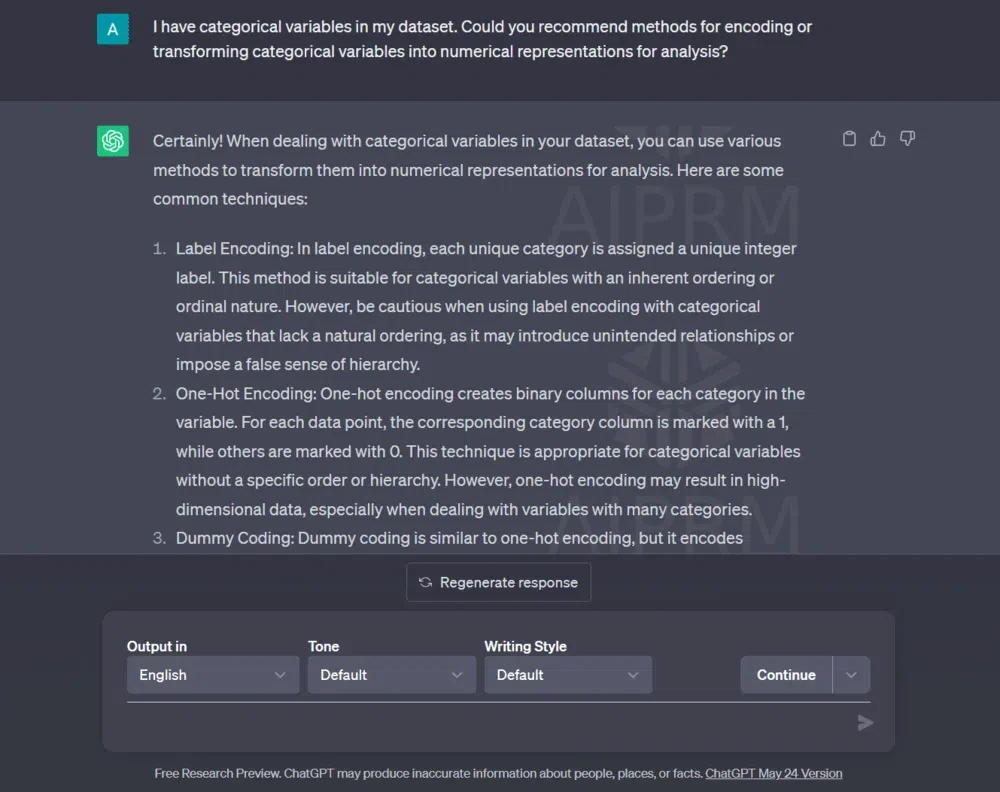
Encoding category variables
Step 5: Write the code and perform the required steps of data cleaning.
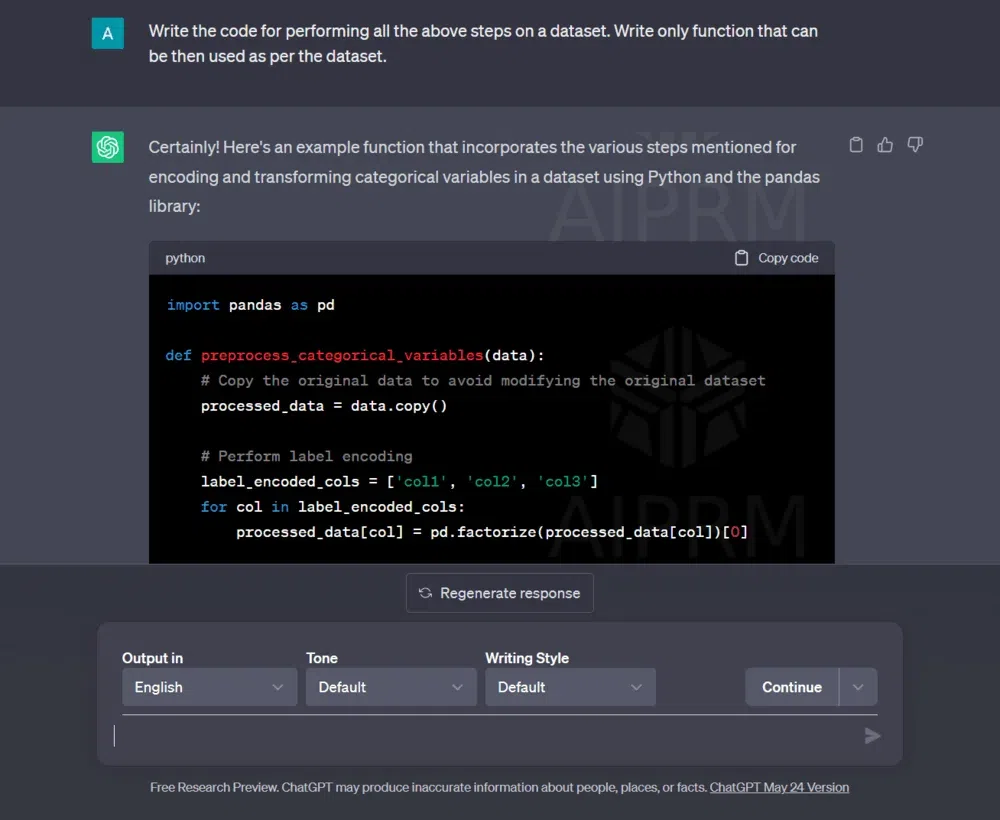
Code of Data Cleaning
C. Data Exploration and Visualization
One of the most crucial steps in a Data Pipeline is to analyze the data using graphs, plots, and maps. Data Exploration allows one to clearly get an idea of the various attributes in the data and then carefully analyze their relationships. All this is done with the help of various statistical measures and most importantly a multitude of plots and graphs that can be easily plotted using Python.
Following is a detailed pipeline for the same to streamline the process:
Step 1: Generating statistics: Some key aspects of the data can only be understood using statistics as they help in understanding the shape and size of the data and what kind of resources might be needed to work on the data.
Following is a short prompt depicting how statistical analysis can be done on data:

Generating Statistics
Step 2: Explore data distributions and their relations: Using ChatGPT we can also generate relevant distributions of the variables with the help of the Python Matplot library. Refer to the following example:
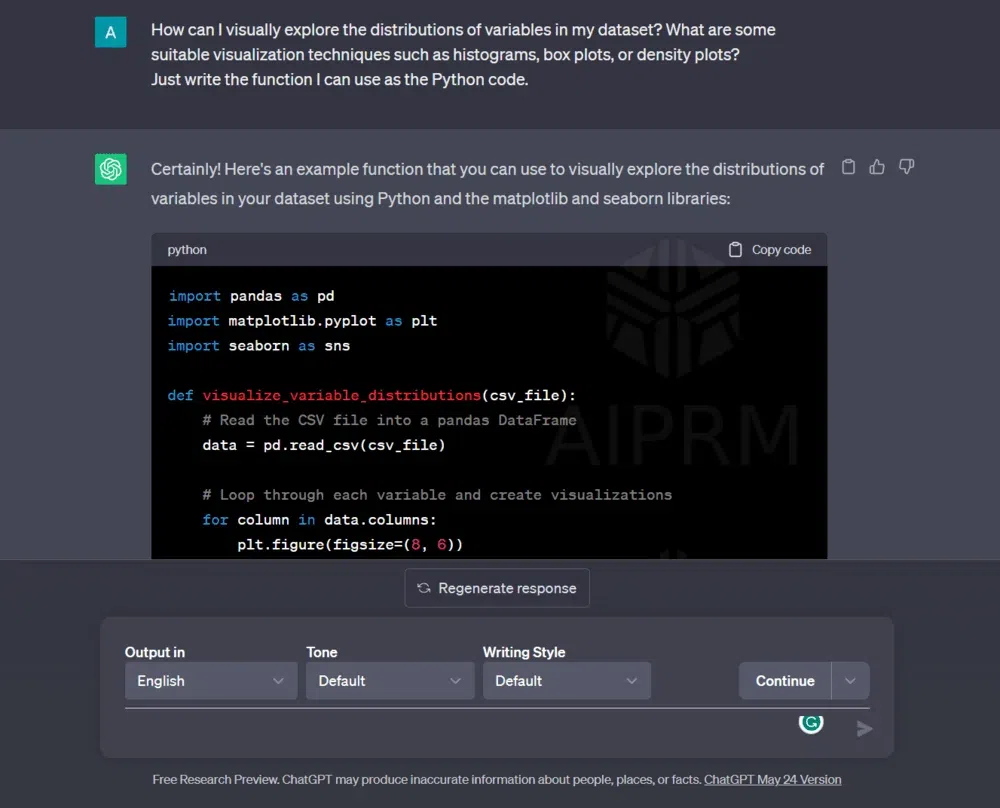
Explore the distributions
Using the prompt as presented above you can generate relevant graphs and plots for each type of variable.
For eg: you can generate a code for a piechart, barplot, etc for categorical variables!
Popular Methods For Data Analysis
Data analysis encompasses a wide range of methods and techniques. Here are some popular methods frequently used:
A. Descriptive Statistics
Descriptive statistics summarize and describe the main characteristics of a dataset. It involves mean, median, standard deviation, and graphical representations such as histograms, box plots, or scatter plots.
To perform descriptive statistics using ChatGPT, provide the necessary details about your dataset and ask for summary statistics or specific visualization recommendations.
Some of the key tasks that you can perform under descriptive statistics using ChatGPT are:
i). Dataset Description: You can write suitable prompts so that ChatGPT can give you a generalized code to generate some key information and description about your dataset. Following is an example:
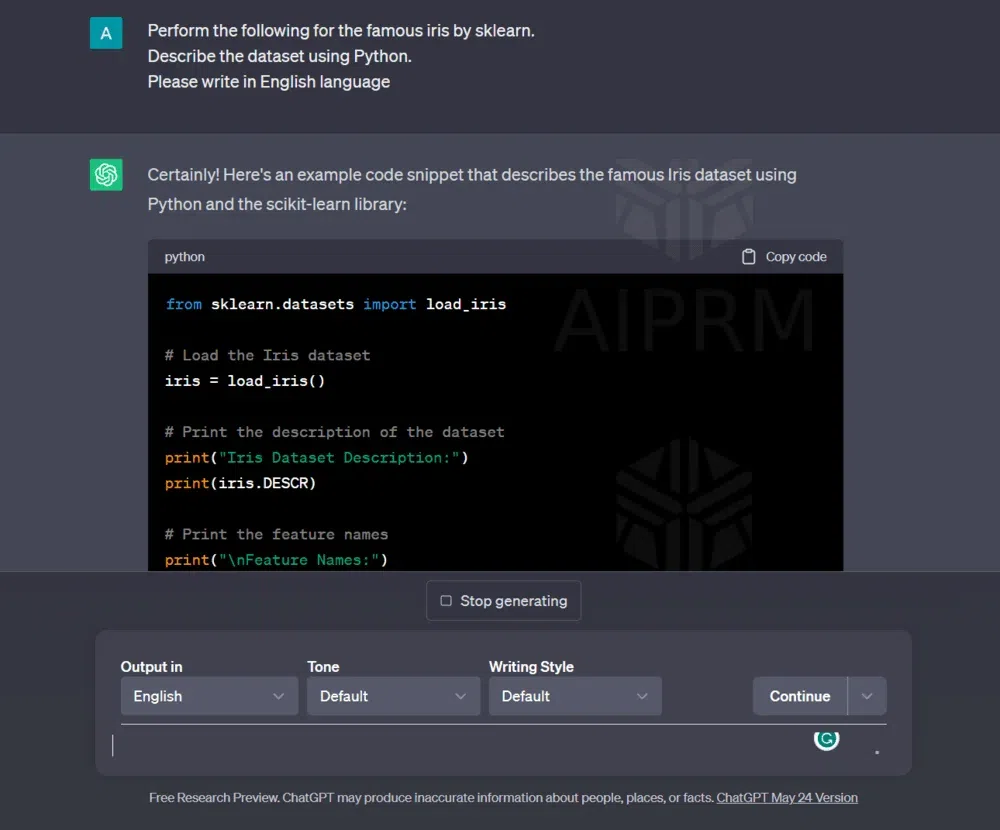
Dataset Description
ii) Analyzing a particular Attribute: It is also important to visualize and find key statistics about a particular feature.
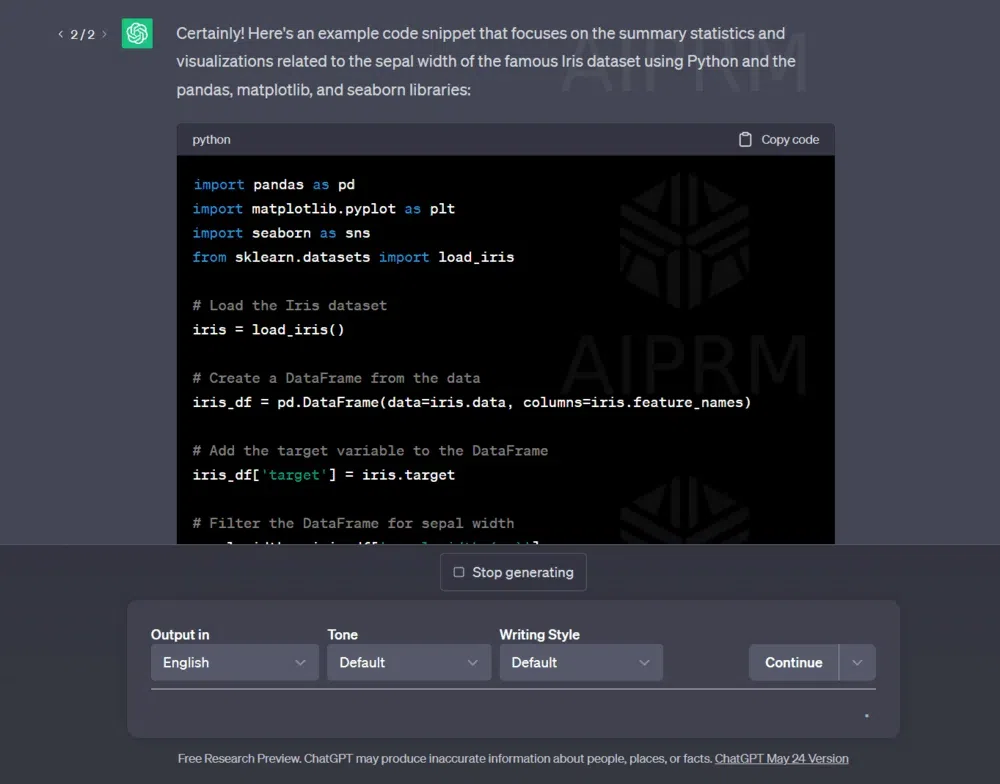
Analyzing a particular attribute
B. Text Analytics
The process of analyzing textual data to understand it more deeply, figuring out key patterns, and performing different types of predictions on the data is what forms text analytics.
This process can easily be simplified using ChatGPT as it can help in understanding the better way to process and analyze data and furthermore, what kind of predictive modeling will work better on the data.
Step 1: Dataset Description: Just like any other dataset text data description is equally an important step. It includes analyzing the most occurring keywords understanding the dataset better and then finally deciding the best way to clean and preprocess it.

Dataset description
Step 2: Apply relevant Pre-processing techniques: Engage in a conversation with ChatGPT about text preprocessing techniques such as tokenization, stop word removal, stemming, or lemmatization to prepare your text data for analysis.
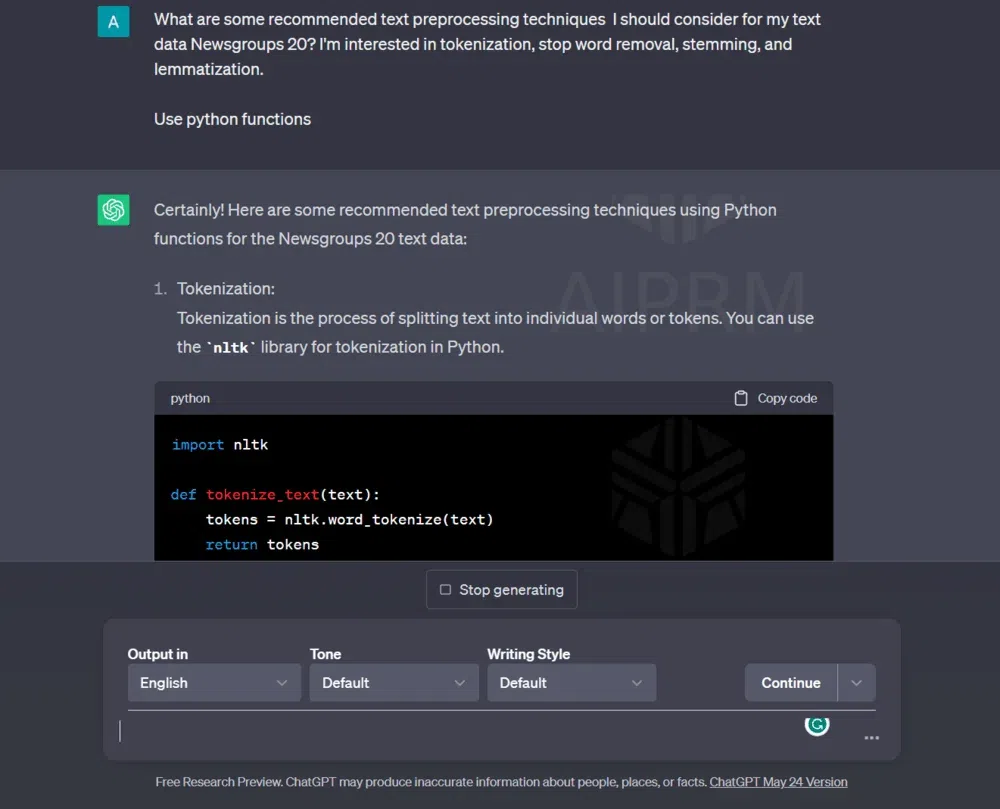
Apply preprocessing techniques
Step 3: Explore and perform Feature Extraction: A crucial task in text data is converting the relevant cleaned and preprocessed text into numerical vectors. Using ChatGPT you can explore the various methods of feature extraction, data vectorization and then finalize one and also generate its code from there itself.
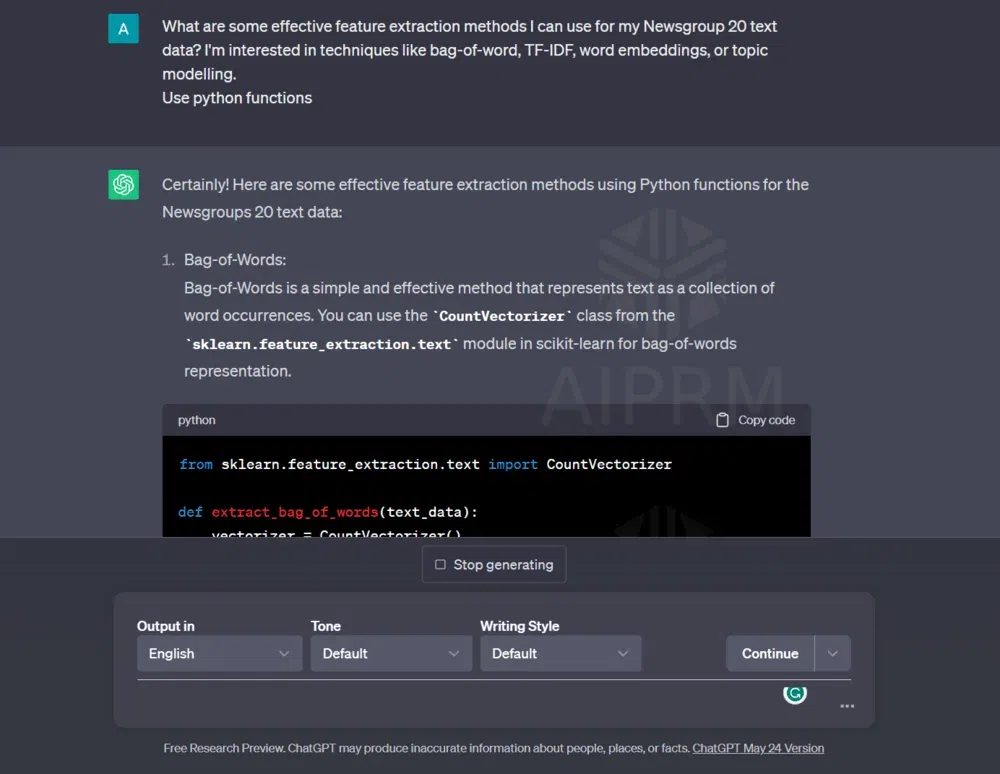
Feature extraction
C. Predictive Modeling
Predictive Modelling is the process of deploying different data prediction, and classification techniques to perform a particular predictive task on the given data. Some of the famous examples of such methods popular among researchers are Regression Analysis, Time Series Forecasting, Classification, and Time-Series Prediction among others.
Using ChatGPT, you can easily figure out the most suitable tasks that can be done on your data, find the best models for the task and then generate the best code for the same all in a single prompt.
Continuing with the above text example, one can ask ChatGPT to help in understanding the best models for a particular task on their data and also generate the necessary code to perform the method:

Performing text classification
Conclusion
Using ChatGPT for Data Analysis is a very suitable use of the AI model as it not only helps in understanding the data better but reduces the chances of mistakes. It can be a great resource for people starting out with the process and also help people in discovering the latest novel methods in the field.
As seen, the complete data pipeline right from finding the right dataset for a task to performing complete data analysis can be easily done with the help of ChatGPT.
FAQs
1. Can ChatGPT help in data analysis?
Yes, ChatGPT can help in analyzing data, in fact, it can help build the complete pipeline.
2. Can ChatGPT write code for data analysis?
ChatGPT can help write code in Python for data analysis from data preprocessing to even modeling.
3. How can I perform data modeling using ChatGPT?
Simply, start with a description of your dataset, followed by explaining the task you want to perform and in case you want to apply a specific model. Finally, tell the model that you want the code in which Programming Language if there is a specific language.
4. Can I do Data analysis as a beginner with ChatGPT?
Yes, ChatGPT makes it very easy to work on data analysis with detailed descriptive answers to all the questions. Also to learn better you can even ask further questions in case of doubts.
5. Is my data secure if I share it on ChatGPT?
No, be cautious not to share confidential data with ChatGPT as all the conversations done are used to further train the model, and the prompts are stored in its database too.




